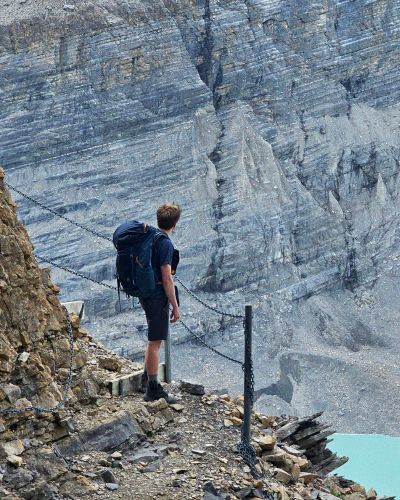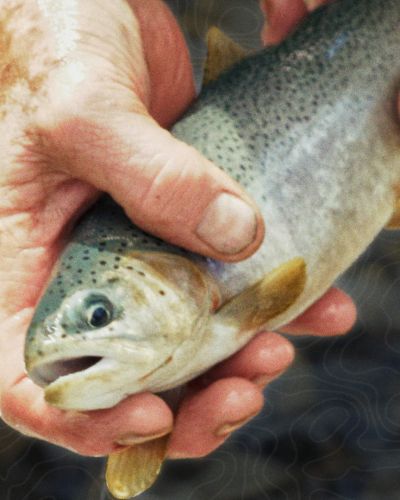As a new angler, I found myself eager to learn more about the fish I was catching – mostly rainbow trout. Most places I’ve fished in are stocked ponds, meaning fish have been introduced into the water body by the provincial government to enhance local ecosystems and fishing opportunities.
Curious about where they came from and the caretakers behind the process, I began to explore how thousands of fish find their way into hundreds of lakes and ponds around my area.
That’s where Bow Habitat Station comes in. This environmental education facility is dedicated to educating the public about diverse aquatic ecosystems and the importance of preserving them.
A key part of the facility is the Sam Livingston Fish Hatchery. This is where thousands of fish are raised from egg to fry before being released into over 200 water bodies across the province of Alberta.
“[Fishing] connects people to the community around them and to the ecosystem they are participating in,” Jenna Tytgat, a fish culture technician at the hatchery said. “Maybe you catch something, maybe you don’t, but you got outside, enjoyed the fresh air… in my book that’s always a good day.”
Interestingly, working directly with fish wasn’t always Tytgat’s plan. But after doing a tour at the hatchery during her degree in environmental science, her interest in the animals grew significantly.
“I’ve always really enjoyed aquatic ecosystems… [but fish] are something I didn’t realize I was interested in, until I started working with them,” she explained. “They recognize you as you walk by, they start to associate you with feeding time and things like that.”
When I first arrived at the hatchery, I wasn’t sure what to expect. I assumed there would be tons of fish, of course, but I wasn’t prepared (in a good way) for the massive scale of the operation. From egg incubation, to rows of tanks for fry, to huge Burrows ponds for the bigger fish, I was blown away.
It’s neat to think those fish will provide anglers with the thrill and enjoyment that comes with hooking a fish after hours of effort.
“What we do is important because it provides people an opportunity to engage with their surroundings… to catch fish in a place where they maybe wouldn’t be able to if we weren’t doing what we did.” Tytgat said. “We make it really accessible for people to have these experiences and build these memories.”
Once the fish are big enough, the technicians load them into massive trucks and embark on their journeys – sometimes lasting a couple of days – to release the fish into their new habitats.
“It’s really rewarding seeing the fish grow from egg, to going out and stocking them, and then seeing the actual impact it has on people, especially kids,” she explained. “When we pull up to a lake and there’s young children out fishing, they are so excited.”
For me, fish technicians act as the bridge between nature and people. They provide the fish, protect the ecosystems, and allow anglers a chance to enjoy the outdoors.
Next time I’m out casting a line, you can bet I’ll be reflecting on just how important these little fish are.



